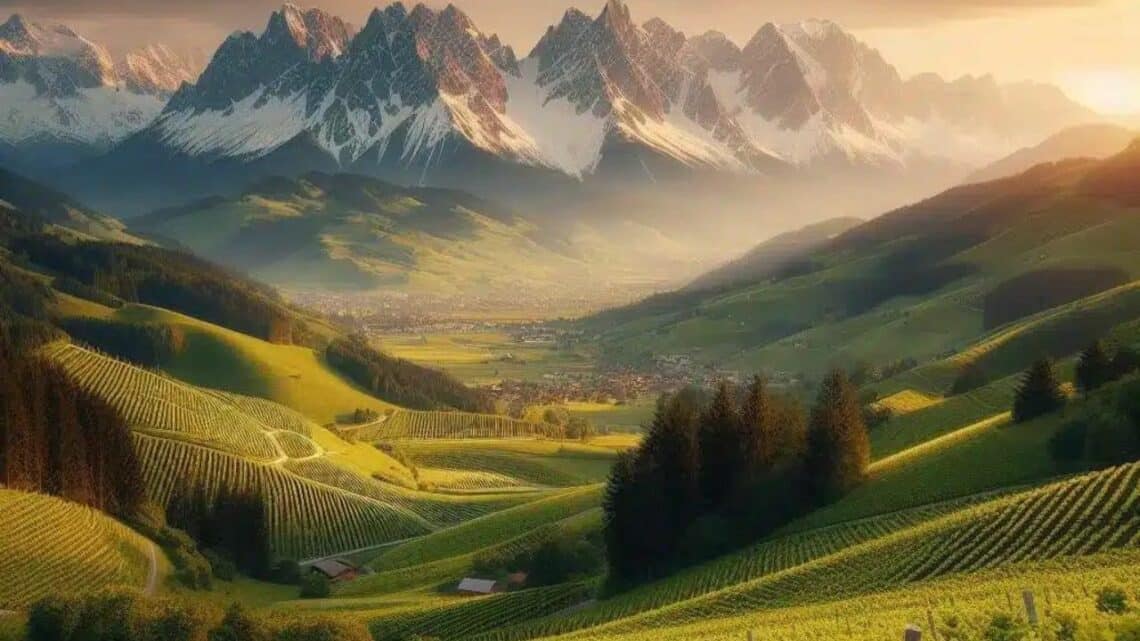
Wines in Tirol
The vineyards of the Austrian state (in addition to Carinthia, Salzburg, Tyrol, and Vorarlberg) belong to the smallest wine-growing region, Bergland.
Nestled amidst the stunning Austrian Alps, Tirol is not just a winter wonderland; it’s a haven for grape aficionados.
History of wine in Tirol
Tirol wine has this crazy history that dates back more than a thousand years. And sure, when people think Tirol, they usually think South Tyrol, with vineyards taking over the scene south of Brixen. But hold up, North Tirol has its own wine game going on, and it’s got some ancient roots.
Around the year 965, in Sautens, they were already talking about Tirol wine. Fast forward a bit, and you’ve got vineyards popping up near Innsbruck, Telfs, Ötz, and all the way up to Prutz, chillin’ at 900 meters above sea level.
Back in the Middle Ages, the weather was playing nice, the economy was doing its thing, and boom—North Tirol wine production was on the rise. Big fan of medieval grape action, the Emperor Maximilian I even suggested planting vines near Martinswand in Zirl and below Thaur Castle.
Why? Closer to the source, fewer transport costs. The man was onto something. By his time, they estimate there were around 60 hectares of vineyards in North Tirol.
Now, during the Middle Ages, spicing up your fermented grape juice was the cool thing to do. Like, throw in some sugar, spices, herbs—whatever made it taste better. And it wasn’t considered cheating; it was an upgrade, especially if the extras were a bit pricey. Water? Nah, wine was the safe bet, ’cause who knows what’s swimming in that H2O.
But then, the 16th century rolled in with the “Little Ice Age,” messing with North Tirol’s wine scene. The climate went south, and transportation to South Tyrol got better. Cheaper wines from Etschtal started flowing in, and North Tirol vineyards started feeling lonely, with only a few vines clinging to warm house walls.
Fast forward to today, and climate change is giving Tirol wine a high five. Warmer temps mean grapes are doing their thing earlier, letting growers play with varieties that wouldn’t usually make it. But there’s a catch—early spring frost is the buzzkill.
Places like Innsbruck, Imst, Tarrenz, Roppen, Haiming, and the upper Gericht lucked out with mild and dry weather. Their sweet microclimate, fewer foggy days, enabled an extended growing season until October.
In the recent years, Tirol winemakers have been going all out, planting new vineyards and wines are being more and more labeled “Österreichischer Qualitätswein” (Austrian Quality Wine).
Terroir in Tirol
Tyrol – 47th parallel, predominantly limestone soils, abundant sunshine, winegrowing zone B – essentially similar to Beaune in Burgundy, France. So, what speaks against viticulture in Tyrol, aside from heat sums and topography?
This intra-alpine mountain wine region has specific climate zones, which, under certain conditions, are quite suitable for viticulture.
The vineyards are primarily situated on south-facing slopes (possibly foehn-influenced), in sunny locations with minimal fog.
Indeed, a predominantly warm and fog-free autumn extends the vine’s vegetative phase, allowing grapes to ripen with ample sugar content while harmoniously developing fruit acidity and tannins—a state referred to as “physiological ripeness.”
Moreover, significant day and night temperature differences in the fall contribute to the berry’s abundant aroma, fruit, and extract.
Grape varieties in Tirol
In Tirol, we’ll find our common grape varieties and a lot of PIWI varieties too.
For red wines, the region grows Zweigelt and Pinot Noir.
On the white side, Tirol shows a delightful spectrum with Weissburgunder, Sauvignon Blanc, Müller Thurgau, Grüner Veltliner, and Chardonnay.
Notably, Tirol has embraced the use of PIWI grapes, further enriching its viticultural landscape.
Solaris, originating from the State Institute for Viticulture in Freiburg, Germany, is a white grape with excellent fungal resistance and early ripening characteristics, offering a fruity bouquet reminiscent of pineapple or hazelnut.
Muscaris, a 1987 creation from the same institute, is a pilzwiderstandsfähige (PIWI) white wine grape, delivering slender to robust wines with a pronounced acidity and a bouquet defined by muscat notes.
Rösler, a red grape developed in Austria, exhibits good color intensity, resistance to certain diseases, and produces wines with distinct forest berry aromas.
Cabernet Jura, another PIWI grape, hailing from Switzerland, offers a fruity, full-bodied experience akin to Cabernet Sauvignon.
Cabernet Cortis, a 1982 creation from the Freiburg institute, combines the robustness of Cabernet Sauvignon with enhanced cassis aroma and flavor.
Additionally, the French-origin Baco Noir, a hybrid grape, has found a home in Tirol’s Oberland region. Known locally as the “Imster Traube,” it is utilized for eating, grape juice, and wine production. With careful cultivation and skilled winemaking, Baco Noir contributes to the production of extract-rich and intriguing red wines in this enchanting Austrian wine region.
Winemaking in Tirol
Characterful wines from North Tirol are shaped, on one hand, by their origin, the terroir, and on the other hand, by the passion and creativity of the winemaker.
In order to express the uniqueness of each terroir, North Tirol winemakers strive to live carefully with the vineyard and reduce yields. Thanks to the long growing season extending into late autumn and the significant temperature differences between day and night, mature grapes with abundant aroma and extract in the berries are produced.
Harvesting is exclusively done by hand with friends and volunteers who meticulously inspect each berry.
After the harvest, in the cellar, the winemakers aim to preserve the special potential of character and uniqueness through minimal intervention.
Wineries in Tirol
Weingut Flür : Their vineyards, Apazhof and Griesegg, are situated on the steep south-facing slopes of Tarrenz. Abundant sunshine, rocky limestone soils, and unique microclimates allow the grapes to develop excellent aromas and ripeness even at an altitude of 900 meters.
Since 2012, their wines have been classified as quality wines according to the Austrian Wine Law.
Weinhof Sticklberge : Sticklberger is the family name under which their wines are offered. It represents quality and the highest drinking pleasure , just as enduring as the name itself, which has been in existence for over 200 years.
In 2017, the idea of Martin Mair to produce wine in Rietz became a reality. “Working with vines and wine has become our special passion, filling us with both humility and pride. It’s beautiful to be a part of such an ancient tradition.“
Weinbau Zoller-Saumwald : Their three vineyards are located in Haiming, in a southern exposure right at the base of the Tschirgant massif, a 1000m-high limestone rock wall.
This mountain massif shields the cold north winds, warms up during the day, and imparts this warmth to their vines at night, acting like a furnace. This unique climate contributes to high grape ripeness.
Since 2007, their wines have been classified as quality wines according to the Austrian Wine Law.
Wein- und Obstbau Zimmermann : The winery was founded in 1920 by Josef Zimmerman, who planted the first vines on the family’s estate in the village of Unterperfuss.
Over the years, the winery has grown and expanded, but the family’s commitment to quality and tradition has remained the same.
The Zimmerman family owns vineyards in several different locations in Tirol, each with its own unique microclimate and soil type. This allows them to produce a wide range of wines with different styles and flavors.
Weingut Zimmerman has been recognized for its high-quality wines by numerous wine competitions and publications. They have won awards for their wines at the International Wine Challenge, the Decanter World Wine Awards, and the Falstaff Wine Guide.
Weinhof Tangl : The Tangl Wine Estate is situated in the old town center of Tarrenz in the heart of the Gurgl Valley at an elevation of around 800 meters. Benefiting from a friendly climate with sunny days and cool nights, vine planting commenced in 2005.
Pinot Noir plays a central role for them, with approximately three-quarters of the vineyards planted with Pinot Noir vines. The remaining vineyard area is cultivated with Müller-Thurgau vines.
Their commitment, finesse, and openness to modern winemaking techniques transform the high-quality harvest into wines distinguished by delicate, youthful aromas, subtle acidity, and their noble, characteristically cool North Tyrolean character.
Weinhof Strad : They have been producing wine for personal consumption since 2007. Over the years, they have consistently improved the quality and expanded the vineyard areas in 2013 and 2014 (with over 1100 vines).
The vineyards are located, on one hand, in the hamlet of Strad right by the Strad Wine Estate and, on the other hand, on the south-facing slope on the opposite side of the Gurgl Valley, directly below the Putzengasse.
Since 2017, their Müller Thurgau has been classified as a quality wine.
Weinbau Strigl : When they planted the first vines in the heart of Sautens in 2011, it laid the foundation for their winemaking. Their lovingly tended vineyard is directly adjacent to our home, at the entrance of the Ötztal Alps.
With joy and targeted, intensive work on the grapevines, they strive to bring the grapes to the highest possible ripeness. This process involves a synergy of soil, yield reduction, manual tasks throughout the year, and the climate of the Tyrolean Oberland with its sunny days and autumnally cool nights.
Vinification is carried out using modern winemaking techniques with gentle pressing, temperature-controlled fermentation in our own cellar, where they give the wine the time it needs to mature ideally, with a lot of love and patience.
Since 2017, their wines have been classified as quality wines according to the Austrian Wine Law.
Weinbau Gielerhof: Their Zillertal wine cultivation, after centuries, is once again the first cultivation of vines in the valley, situated in the heart of Zell am Ziller.
Due to the geographical location of the surrounding mountain slopes, an optimal “bowl effect” is created.
The soil, a result of past floods from the Ziller River and the Gerlosbach, provides the perfect foundation for cultivation, imparting that special something to the grapes.
Weinbau Kurt Neurauter : Since 2012, their vineyard has spanned 0.5 hectares, cultivating the Kerner grape variety, also known as Herold Weiss, crossbreed of Trollinger and Riesling, developed by August Herold in Weinsberg in 1929.
The wine produced is dry, fruity, and full-bodied, with high acidity and an excellent, fruity bouquet that varies with each vintage.
The vineyard’s locations in Telfs include Plattlroan, Moos, and Hausgarten, positioned at an elevation of approximately 650 meters.
Joseph’s Tiroler Weinbau: The passion for wine and the vision to establish a vineyard in Mieming had long been pursued by Josef. In 2014, he took decisive action and planted 1,000 vines right in the midst of his beautiful golf course.
Unfortunately, he did not live to see his first major harvest. In memory of Josef, the family joyfully continue his work and take spride in the immediate classification of all submitted wines as “Qualitätswein Österreich” (Austrian Quality Wine).
Currently available for sale are Grüner Veltliner (white wine), Bouvier (white wine), and a Rose Cuvée (rosé wine made from Zweigelt and Rösler).
Vinum Fundus Fam. Spiss : Their winery under the brand “Alpine Weinkultur VINUM FUNDUS ®” is a small family business in the North Tyrolean Oberland, producing exclusive wines and products in Pfunds – Birkach in the Upper Gericht, near the tri-border area with Switzerland and Italy.
The vineyard and operation are located directly on the culturally significant Via Claudia Augusta, an ancient Roman road that traversed the Alps, connecting the Po Valley with the flat areas of southern Germany.
The noble drops of red and white wine, originating from the 1000 vines of the winery, are self-pressed according to organic-biological principles. Their products, along with other young wineries in the region, are reviving alpine winemaking culture in North Tyrol.
The currently wine-friendly climate in North Tyrol, especially in the Upper Gericht, and their sunny and beautifully sloped location in Pfunds – Birkach, prompted them to embark on a small experiment.
After thorough preparation, including the selection of suitable grape varieties for the existing soils, climate, and altitude (1000 meters above sea level), guided by the Research and Experimental Center Laimburg/South Tyrol, the vineyard was planted in the winter and spring of 2015 on an area of 2,000 m2 with 1,000 vines.
Weingut Romasi : Founded in 2016 by the passionate couple Florian and Christina Zangerl, Romasi is driven by a commitment to sustainability, innovation, and crafting wines that truly express the unique character of Tirol.
Weingut Romasi stands out for its dedication to sustainable practices. They cultivate their vines using Pilzwiderstandssorten (PIWI), also known as fungus-resistant grape varieties.
Unterinntal Wein Franz Wechselberger : Nestled in the heart of Tirol, Austria, Unterinntal Wein is a collective of passionate winemakers.
It was the hot summer of 2013 when Franz started planting a few vines, and year by year, their number increased. In 2016, he made his first wine: “It was drinkable!” By now, they can produce several different wines with an annually rising quality.
His most significant achievements so far include winning the SILVER MEDAL at the PIWI International Wine Challenge 2022, with participants from all wine countries in Europe, and the AUSTRIAN WINE AWARD 2023 (Austria’s great wines).
In October, an international award was added: SILVER at the “PIWI Wine Award International 2023.”
Wine festivals in Tirol
Wein am Berg (April) : This is an annual event held in the picturesque town of Sölden, Austria. This exclusive festival, held in the esteemed 5-star Hotel Das Central, promises a harmonious blend of gourmet cuisine, exquisite wines, and breathtaking alpine scenery.
- Location: Hotel Das Central in Sölden, Austria
- Getting there: The easiest way to reach Sölden is by plane, with regular flights from major European cities connecting to Innsbruck Airport (INN), located approximately 60 kilometers away. From Innsbruck, connect by train or taxi to Sölden. Alternatively, Sölden is well-connected by road, with the A12 Inntal Autobahn providing a direct route from Munich, Germany, to Sölden.
- Accommodation: The perfect way to immerse yourself in the Wein am Berg experience is to stay at Hotel Das Central, the festival’s host venue. The hotel offers luxurious accommodations, gourmet dining options, and a variety of spa and wellness facilities. For those seeking a more affordable option, there are several hotels and guesthouses in Sölden, ranging from traditional alpine lodges to modern apartments.
- Tickets: Wein am Berg offers a variety of ticket options to suit different preferences and budgets. Single-day passes provide access to the festival’s main events, including gourmet dinners, wine tastings, and masterclasses. Multi-day packages include accommodation, meals, and exclusive wine experiences.
- Opening hours: Wein am Berg typically takes place in April, with specific dates announced each year. The festival typically runs for three days, with events taking place throughout the afternoon and evening.
- What to expect: At Wein am Berg, guests can expect an unparalleled culinary and wine-tasting experience. Award-winning chefs will prepare exquisite meals, meticulously paired with an array of fine Austrian and international wines. Renowned winemakers will share their passion for wine, guiding guests through the world of viticulture and offering insights into their craft.
Beyond the culinary delights, Wein am Berg offers a variety of unique experiences. Guests can participate in wine-tasting masterclasses, explore the art of winemaking through guided tours, and even embark on a private hike to the summit of Gaislachkogl, where they can enjoy a glass of wine at 3,048 meters (10,000 feet) above sea level.
There, you’ll be able to taste the famous Pino 3000.
Pino 3000 is a unique and exclusive wine created by Hotel Das Central in Sölden, Austria, specifically for the Wein am Berg festival. The wine is a blend of Pinot Noir grapes from three renowned wine regions: Austria, Germany, and Italy. The grapes are carefully selected and fermented at the ice Q wine cellar on the summit of Gaislachkogl mountain, at an altitude of 3,048 meters (10,000 feet).
Pino 3000 is known for its complex and elegant flavors, with notes of red berries, spices, and chocolate. The wine is aged for an additional year in the ice Q cellar, which provides ideal conditions for slow maturation and enhanced flavor development.
The wine is only available at Wein am Berg and through Hotel Das Central, making it a truly exclusive and sought-after collectible. It is a true testament to the culinary and wine expertise of Sölden, Austria.
- Tips: To fully appreciate the Wein am Berg experience, here are some helpful tips:
- Book your tickets in advance to secure the best seats and experiences.
- Embrace the intimate atmosphere of the festival, and take your time to savor the flavors and aromas of the wines and cuisine.
- Engage with the winemakers at the masterclasses and tastings to gain a deeper understanding of the wines and the regions they represent.
- Don’t miss the opportunity to explore the stunning alpine scenery of Sölden, whether by hiking, biking, or simply taking in the breathtaking views.
- Official website : https://weinamberg.at
Pitztal Wine & Food Festival (April): This festival celebrates the region’s fine wines and cuisine in the beautiful Pitztal Valley. Visitors can enjoy tastings from local wineries, as well as traditional Tyrolean food and live music. It typically takes place in April, kicking off the region’s spring season with a celebration of fine wines and delectable local cuisine.
- Location: The festival takes place in the picturesque village of Jerzens in the Pitztal Valley. It’s easily accessible by road from Imst and surrounding towns.
- Getting there: Public transportation options are available, but limited. Buses connect Jerzens to Imst and Landeck, with connections to train stations. Consider renting a car for more flexibility.
- Accommodation: Book your accommodation well in advance, particularly if Easter falls during the festival week. Hotels, guesthouses, and apartments in Jerzens and surrounding villages can fill up quickly.
- Tickets: Entry to the festival grounds is usually free, though you need to purchase tokens for food and wine tastings. You can buy tokens at booths within the festival area.
- Opening hours: The festival typically opens in the afternoon (around 3pm) and continues until late in the evening (around 10pm).
- What to expect: Over 30 wine booths showcasing regional wines from Tyrol and other Austrian wine regions. Local food stalls offering Tirolean specialties and international delights. Live music and entertainment throughout the festival. Cooking demonstrations and workshops showcasing local culinary traditions. A vibrant atmosphere with locals and tourists enjoying the food, wine, and festivities
Here are some resources where you can find more information about the Pitztal Wine & Food Festival: Austrian Tirol website: https://www.tyrol.com/things-to-do/events/all-events/e-pitztal-spring-snow-wine-food-festival
Kufstein Wine Festival (July): This popular festival takes place in the charming town of Kufstein, with stunning views of the Tyrolean Alps. The festival usually takes place in mid-July, typically lasting two days (Friday and Saturday)
It’s a popular event for both locals and tourists, presenting wines from Austria and Italy, particularly from Kufstein’s twin towns Rovereto in Trentino and Langenlois in Lower Austria. So, if you’re a wine enthusiast planning a trip to Tirol in the summer, the Kufstein Wine Festival is definitely worth adding to your calendar!
- Location: The festival is held in the beautiful Kufstein town park, easily accessible on foot from the old town center.
- Getting there: Kufstein is well-connected by train and bus. Trains run regularly from Innsbruck, Salzburg, and Munich. If you’re flying, the nearest airport is in Innsbruck (around 80km away).
- Accommodation: Book your accommodation early, especially if you’re visiting during peak season. Hotels, guesthouses, and Airbnbs in Kufstein and nearby towns can fill up quickly.
- Tickets: Entry to the festival grounds is usually free, though you need to purchase tokens to taste wines. You can buy tokens at booths within the festival area.
- Opening hours: The festival typically opens in the afternoon (around 3pm) and continues until late in the evening (around 11pm).
- What to expect: Over 100 wine booths showcasing wines from Austria and Italy, particularly from Kufstein’s twin towns Rovereto and Langenlois. Local food stalls offering Tirolean specialties. Live music and entertainment throughout the festival. A lively atmosphere with locals and tourists mingling and enjoying the wines and food
- Tips: Wear comfortable shoes, as you’ll be doing some walking around the festival grounds. Bring cash, as not all vendors may accept cards. Pace yourself when tasting wines, and drink plenty of water throughout the day. Consider staying overnight in Kufstein or a nearby town to avoid late-night transportation hassles. Check the official website or social media pages for the latest updates and announcements closer to the event date.
Here are some resources where you can find more information about the Kufstein Wine Festival:
- Official website: https://www.kufstein.com/de/kultur/events-tirol/weinfest-kufstein.html
- Austrian Tirol website: https://www.tyrol.com/things-to-do/events/all-events/e-kufstein-wine-festival
You can find all the events in Tirol here.
Conclusion : Wines in Tirol
So, there you have it—the wild ride through the fascinating history of Tirol wine, from the medieval grape antics to today’s thriving vineyards and diverse grape varieties. The terroir, the unique grape selection, and the passion of the winemakers all contribute to the characterful wines that define North Tirol. From Weingut Flür to Weinbau Gielerhof, each winery adds its own flavor to the Tirol wine scene.
Now, why not dive into the Tirol wine culture yourself? Explore the rich terroir, taste the diverse grape varieties, and enjoy the lively atmosphere of wine festivals like the Pitztal Wine & Food Festival and the Kufstein Wine Festival. Whether you’re a wine enthusiast or a casual sipper, there’s something for everyone in Tirol’s vibrant wine scene.
So, what are you waiting for? Leave a comment sharing your thoughts, hit that share button to spread the Tirol wine love, or better yet, book your accommodation for one of the upcoming festivals.




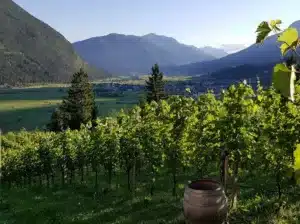
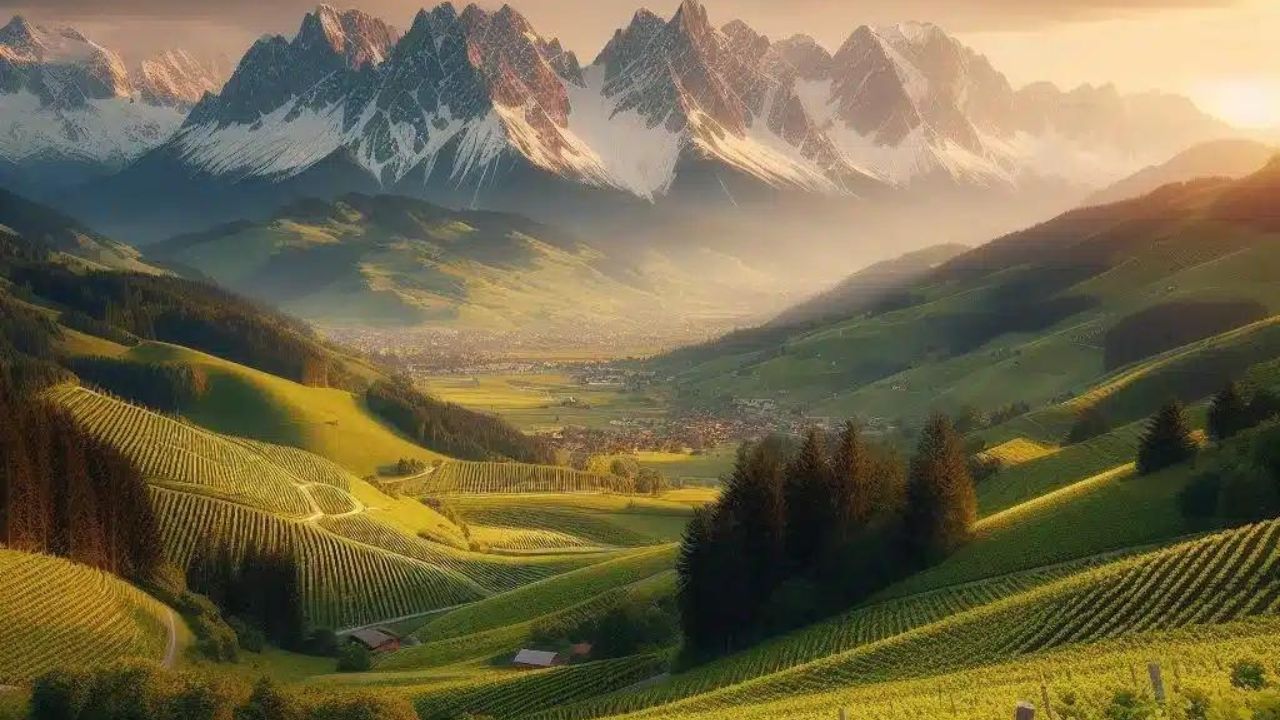
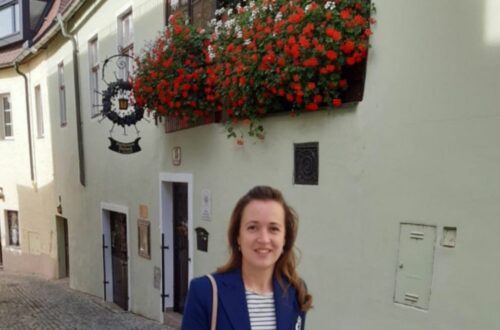

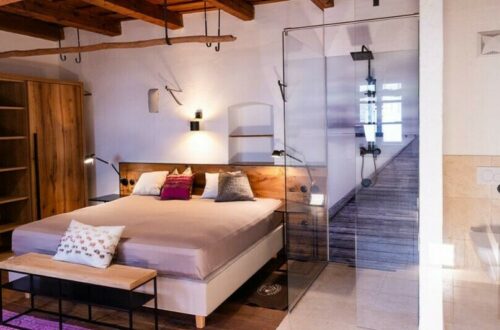
2 Comments
Franz Wechselberger
Sehr toller Beitrag über das kleine aber feine Weinland!
Gratulation
Mademoiselle
Danke sehr 😀